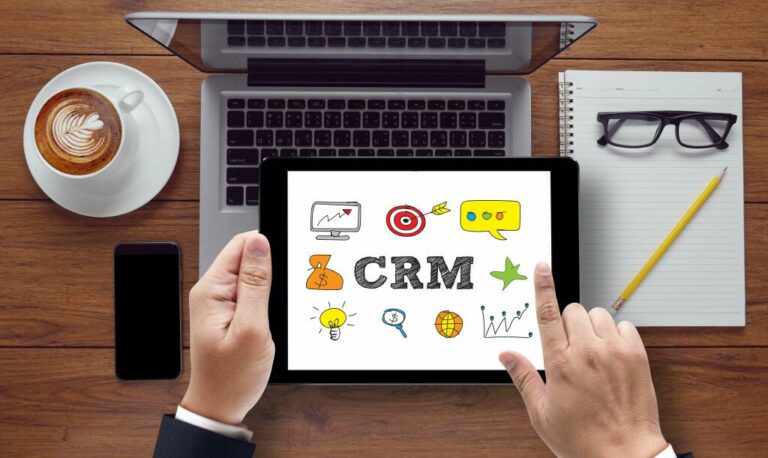Содержание
An EHR is an interactive patient tool that allows nurses to develop an efficient workflow plan to reduce time wastage and avoid role duplication . In this regard, it promotes the efficiency and effectiveness of nursing practice https://globalcloudteam.com/ as efficient workflows allow more time for bedside care. Additionally, it provides integrated data to other health care professionals, which promotes interdisciplinary collaboration within the hospital setting.

Nurses, physicians, pharmacists, and lab technologists have instant access to the patient data stored in health records. Nurses can use the patient information captured by the electronic health records to formulate individualized care plans. Nursing informatics entail the use of health care technology such as the EHR. Electronic health records provide integrated data that nurses can use to support safe and patient-centered care.
Uptake of health information technologies has been slowly increasing in recent years. Provinces and territories are responsible for developing their own electronic information systems, with national funding and support through Canada Health Infoway. However, there is no national strategy for implementing electronic health records and no national patient identifier. The second EHR component is the laboratory system that contains data related to lab tests. It links administrative information, such as schedules, with laboratory data. The system is compatible with most test instruments, which makes automated diagnosis and assessment possible .
Cite This Paper
When electronic records are not available to patients, such as in dentistry, they can request a paper copy. Researchers reviewed data from more than 1.2 million surgical patients and 12,000 nurses at 343 hospitals in four states. They also found previously undocumented associations between EHR usability and an increased surgical patient mortality rate as well as significantly higher odds of 30-day readmission. Study authors suggested that employing EHR systems with suboptimal usability may be partly responsible for the growing prevalence of burnout among nurses. AHRQ hosted a free Web conference on July 1, 2021, to discuss how digital healthcare has been affected by the pandemic.
- An expert committee was then established to support the adoption and implementation of an EHR system throughout the country.
- This eliminates time wastage, as nurses are able to access all patient data from the integrated health records.
- Another less obvious reason why EHR is important to the organization relates to its capability to support audit and staffing issues.
- Before sharing sensitive information, make sure you’re on a federal government site.
- Therefore, EHR provides integrated data that are useful in providing quality patient care.
The EHR technology is grounded in nursing theories that provide a framework for the integration of technology in nursing care. One such theory is the systems theory, which focuses on the “interacting parts within boundaries” . The electronic health record utilizes the patients’ body systems and technology to improve patient care . In contrast, the cognitive theory relates to health information processing, which is the central aim of EHR.
Highlights From Ahrq’s Patient Safety Network
Since April 2015, all GP practices have been contractually obliged to offer patients the choice of booking appointments and ordering prescriptions online. As of March 31, 2016, practices are required to offer patients access to their own detailed coded record, including information about diagnoses, medications and treatments, immunizations, and test results. Practices are not required to allow patients access to information that clinicians enter in free-text fields.
The 21st Century Cures Act, passed in 2016 to promote the use of EHRs overall, requires that all health care providers make electronic copies of patient records available to patients, at their request, in machine-readable form. One of the key features of an EHR is that health information can be created and managed by authorized providers in a digital format capable of being shared with other providers across more than one health care organization. EHRs combine different ancillary services to provide integrated data for improving nursing care. One such component is the administrative system, which encompasses patient “registration, admission, discharge, and transfer data” . This information is useful in clinical analysis, patient identification, and transition care. Therefore, diagnoses and lab tests related to the patient can be retrieved from the EHR using the identifier.

Reducing the incidence of medical error by improving the accuracy and clarity of medical records. Before sharing sensitive information, make sure you’re on a federal government site. Healthcare professionals experience of psychological safety, voice, and silence. It becomes possible to easily measure and analyze results, identify priorities for improvement and monitor how improvements are implemented by clinicians.
What Is An Electronic Health Record Ehr?
Even if hospitals are owned by the same local bureau of health or affiliated with the same universities, different EHR systems may be used. The New Health Information System is being implemented incrementally, with the goal of establishing a universal system of electronic records connecting every level of care. It currently provides information on approximately 85 percent of services included in the LEA. Primary care is not included, but hospital, emergency, outpatient specialist, residential, and palliative care are, as well as pharmaceuticals. The NSIS currently registers administrative information on care delivered, but medical information appears to be more difficult to gather. No unique patient identifier exists at the national level, while in most regions administrative records are linked together using unique patient identifiers generated at the regional level.
This paper was written and submitted to our database by a student to assist your with your own studies. You are free to use it to write your own assignment, however you must reference it properly. This service is provided to you at no charge by the Agency for Healthcare Research and Quality . AHRQ News Now is a weekly newsletter that highlights agency research and program activities.
We’ve gathered the best apps for nurses including work references, mental health apps and travel nurse aids. They all have their own interactions with the patient, and having the full body of patient data at their fingertips can make the difference in producing the best outcome. You can choose to stay at the bedside, work in outpatient settings, go into management, or obtain an advanced degree that provides many new and exciting nurse career options. When staff can access the right data efficiently at the right time, clinical standards are easier to reach for via data-based decision-making. In St. Louis, the Pipeline to Compassionate Care program is working to dismantle the effects of medical racism, one provider and patient at a time. Making the health information available, reducing duplication of tests, reducing delays in treatment, and patients well informed to take better decisions.
Ahrq In The Professional Literature
The technology has direct benefits to the patients and the nursing practice through improved workflow efficiency. The EHR’s less obvious benefits relate to improved provider partnerships, continuity of care, and hospital management functions. An indirect benefit of an EHR system is that it fosters partnerships between providers through data sharing. Thus, it enhances continuity of care, which translates into better patient outcomes. The use of electronic records improves patient care through the “electronic access of care pathways and protocols” . Thus, the use of EHR reduces medical errors, which contributes to improved patient safety.
Teams of clinicians, therapists, nurses, primary care and specialist physicians, and technicians are often involved. Labor and delivery nurse Dwanda Trask is able to balance short-term travel nursing jobs with family time. Discover the extensive benefits of travel nursing and how you can get started traveling today with Nursechoice. Check out our list of Nurse Licensure Compact states that offer travel nurses higher salaries, lower cost of living and better quality of life.
Nursing Informatics: Electronic Health Records
It is obvious that EHR is an important health technology because of its ability to support patient-centered care. EHR facilitates the integration of patient information and clinical services, making patient care safer and effective. With the help of EHR, time-consuming electronic healthcare records paperwork is eliminated, which provides nurses more time for bedside care. Additionally, it is evident that EHR maintains comprehensive data on each patient. This eliminates time wastage, as nurses are able to access all patient data from the integrated health records.
An EHR is an automated health record that contains a broad range of patient information, including “demographics, progress notes, health problems, medications, medical history, and vital signs”, among others . Its aim is to transform decision-making and facilitate data sharing within clinical settings. Therefore, students interested in EHR should seek to understand its theoretical grounding, uses, and benefits to patients, nurses, and physicians.
Nursing Theories And Ehr
Thus, the use of electronic records, particularly the CPOE, significantly reduces the risk of adverse events. Additionally, less time is spent to complete electronic orders than to record each entry in medical documents. Everyone in Taiwan carries an electronic NHI card bearing a unique personal identifier to access care. The card encodes personal information, insurance data, notes from recent medical visits, diagnoses, drug prescriptions, drug allergies, major illnesses, organ donation consent, palliative care directives, and public health records . In June 2015, a law addressing a national EHR was adopted; it came into effect in 2017. By spring 2020, an EHR with unique identifiers will be rolled out in all regions and should increase care coordination, quality of treatment, patient safety, and efficiency in the health care system.
The pressing need to put evidence into practice to optimize outcomes for all patients and improve experience and reduce burnout for all providers has been dramatically intensified by the COVID-19 pandemic. The Web conference speakers did not discuss or provide any treatment recommendations for COVID-19. It simplifies the task of making and maintaining patient records by eliminating much of the paperwork. Additionally, it improves physician ordering and communication with other health care staff. Electronic records are less prone to errors than written documents because they are legible.
Among their manybenefitsare accurate, up-to-date, and comprehensive information at the point of care, safer prescriptions, legible documentation, and improved productivity. The ability to access and share accurate clinical information is central to the New Zealand Health Strategy, which provides high-level direction for the country’s health system. Reducing medical error by improving the accuracy and clarity of medical records.
Nurses can also use the technology to retrieve the health information of patients with a particular disease or condition. Certified EHRs provide additional information about the patient’s health literacy. This function is essential in providing appropriate educational resources to the patient. An EHR can also be used to reconcile medications taken by patients, develop transition of care summaries, and maintain immunization records . The EHR technology has the capability to maintain electronic health records and diverse patient data. Thus, it is a useful tool for reporting lab results to regulatory bodies for the purposes of disease surveillance.
Agency For Healthcare Research And Quality
The third component is the radiology system, which links images (x-rays) to the other patient data. This allows nurses to track patient progress and communicate results to physicians. In contrast, the pharmacy system helps in prescription and pharmacy ordering. The computerized physician order entry , which is a major component of the EHR, enables providers to “order laboratory, pharmacy, and radiology services” .
It enables clinicians to make accurate diagnoses and provide appropriate treatment. The secure system collects summary patient health records from different health care providers, and authorized health care professionals can access the EHR to have a holistic and longitudinal view of a patient’s health care history. As of 2019, more than 1,300 health care institutions participate in the national EHR. Besides improving direct patient care, EHR provides data for other hospital processes.
The computerized provider order entry is an EHR technology that allows physicians to provide treatment instructions in an electronic format, which reduces medication errors and improves nursing workflow in hospitals. Electronic records also allow nurses to track patient allergies related to drug interactions and provide optimal care. Since the EHR contains patient demographics, medical history, and assessment data, it serves as an essential clinical support tool.
Within hospitals, EHRs are also linked to the health insurance systems for payment of claims, with unique patient identifiers . However, EHR systems vary significantly by hospital and are usually not integrated or interoperable. Patients often must bring with them a printed health record if they want to see doctors in different hospitals.
The Ministry of Health and Family Welfare published the first national standards for electronic health records in 2013. An expert committee was then established to support the adoption and implementation of an EHR system throughout the country. As of 2016, however, survey results have revealed that uptake of the system has been slow as compared to other middle- and high-income countries. The electronic health record project (Projet dossier medical partagé) covered roughly 1,882,503 patients at the end of 2018, and an estimated 731 hospitals (one-third of all hospitals). Hospital-based and office-based professionals and patients have a unique electronic identifier, and any health professional can access the record and enter information subject to patient authorization. The NHS number assigned to every registered patient serves as a unique identifier.
Tracking changes in a patient’s condition by constantly monitoring vital signs is another important use of the technology. According to the Centers for Medicare and Medicaid Services, nurses can also monitor “smoking status for respiratory patients aged over 13 years” (par. 9). EHR also allows practitioners to provide self-care instructions and other information to discharged patients. Reporting hospital quality indicators to regulatory bodies is another key function of the EHR. It allows nurses to track and report medical errors and patient fall incidences. EHR also facilitates electronic sharing of patient information with authorized providers to facilitate care transition and referrals.
